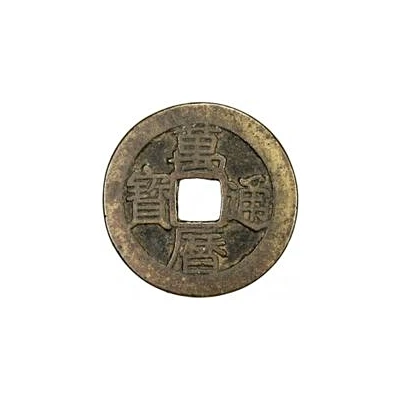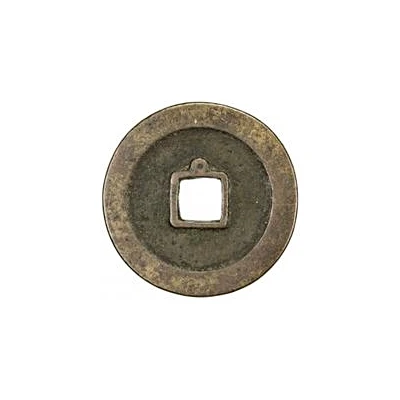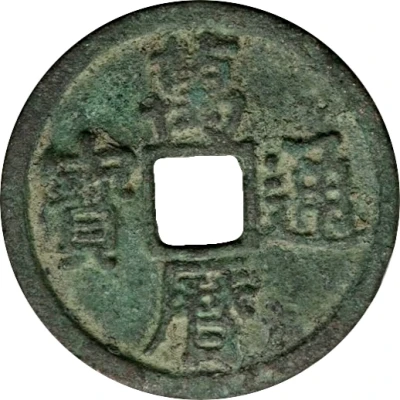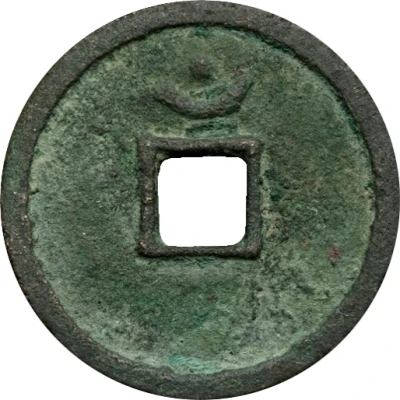1 Cash - Wanli Tongbao; with crescent ND
| Brass | - | 24 mm |
| Issuer | Empire of China |
|---|---|
| Emperor | Ming dynasty › Wanli (明神宗) (1572-1620) |
| Type | Standard circulation coin |
| Years | 1576-1620 |
| Value | 1 Cash |
| Currency | Cash (621-1912) |
| Composition | Brass |
| Diameter | 24 mm |
| Shape | Round with a square hole |
| Technique | Cast |
| Orientation | Medal alignment ↑↑ |
| Demonetized | Yes |
| Updated | 2024-10-03 |
| Numista | N#222135 |
|---|---|
| Rarity index | 100% |
Reverse
Crescent (facing up) above.
Edge
Plain
Comment
While casting was stopped at the last emperor's death in 1572, it was resumed again in 1576 at the Peking and Nanking mints. Soon after, mints in Yunnan, Shanxi, Shandong, Henan, Shaanxi, Jiangxi, Fujian, and Huguang were also opened. However, due to poor circumstances, the Wanli coins were a failure, and by 1582, all mints except for Huguang closed. There was an attempt to open mints in 1599, including opening a Board of Works in Nanking, although so many coins were produced there that casting was cut back, and other mints were closed.Interesting fact
The Wanli era (1576-1620) was a time of great economic growth and cultural flourishing in China, and the introduction of the Tongbao currency system, which included the 1 Cash coin , played a significant role in facilitating trade and commerce during this period. The use of brass as the material for the coin was also significant, as it was a more durable and practical alternative to the traditional use of cowry shells or other precious metals.



